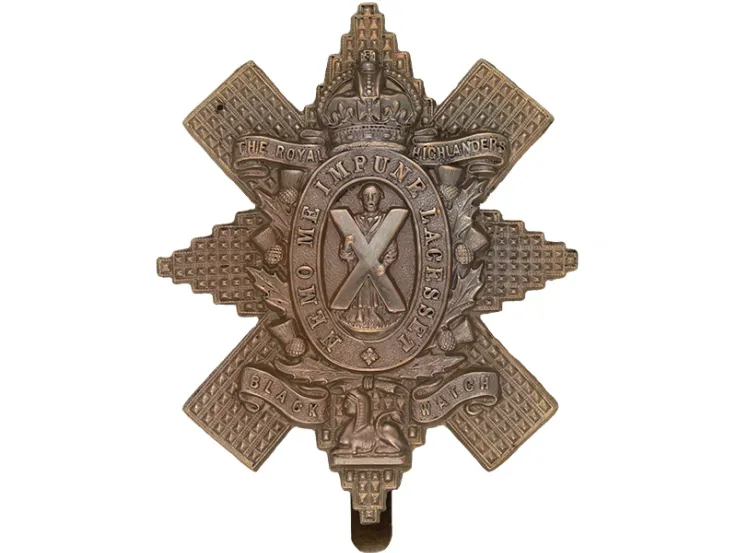Origins
The regiment was raised in Stirling by Colonel Robert Abercromby in October 1787. Originally named the 74th (Highland) Regiment of Foot, it was formed for service in India with the forces of the East India Company. Although the Company was charged with the regiment’s upkeep while in India, it was still a British Army unit.
Arriving there in late 1788, it fought in the Third Mysore War (1789-92) at Travancore (1789) and Seringapatam (1792). It also took part in the Fourth Mysore War (1798-99). This included the capture of Seringapatam and the final defeat of Tipu Sultan in 1799.
Service in the Second Maratha War (1803-05) followed, including the Siege of Bharatpur (1805). For its Indian services, the regiment won the Royal Bengal Tiger on its Colours and headdress.
It returned to Scotland in 1807. But, two years later, it lost its Highland status and dress owing to recruiting difficulties.
Deployments
Its next overseas posting was to Sicily from 1811 to 1814. This period also saw it carry out raids against the French in Calabria.
Nine years on the Ionian Islands and Gibraltar followed, before the regiment returned to Britain in 1823. It then spent 26 years on home service, only interrupted by a year fighting in the Sixth Cape Frontier War (1834-36) in South Africa in 1834.
In 1849, it returned to India, so it was already in theatre on the outbreak of the Indian Mutiny (1857-59). It went on to serve at the Siege of Delhi (1857), the Siege of Lucknow (1857) and the Capture of Lucknow (1858).
In 1862, the regiment regained official recognition of its Scottish connection, when it was made the county regiment for Stirlingshire.
After the Mutiny, it spent the 1860s and 1870s in Britain, Ireland, Gibraltar, Hong Kong, Singapore and the Cape Colony (now part of South Africa).
Legacy
In January 1881, the regiment returned home. Five months later, it merged with the 92nd (Gordon Highlanders) Regiment to form The Gordon Highlanders.
Regimental museums
The National Army Museum works with a network of Regimental and Corps Museums across the UK to help preserve and share the history and traditions of the Army and its soldiers.
Discover more about the 75th (Stirlingshire) Regiment of Foot by visiting The Gordon Highlanders Museum in Aberdeen.










